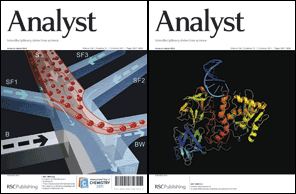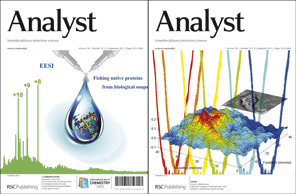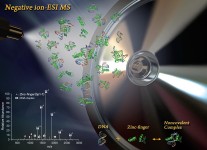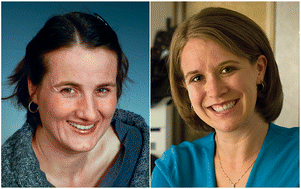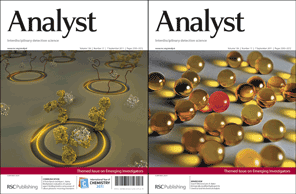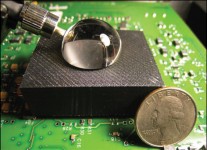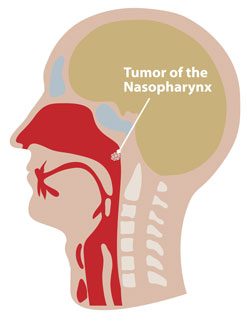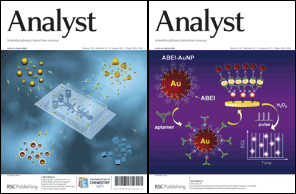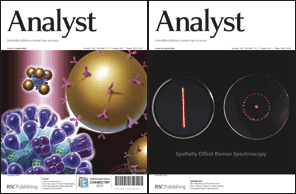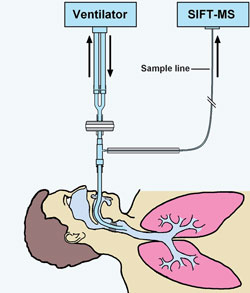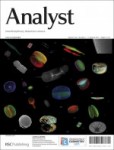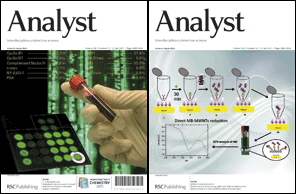The latest issue of Analyst is now available online.
On the front cover is work from Xuefeng Yin of Zhejiang University and colleagues. One of the major difficulties in microfluidic cell analysis for adherent cells is that the cells are prone to attaching to the channel surface. Yin et al present a simple 3D hydrodynamic focusing microfluidic device integrated with continuous sampling, rapid dynamic lysis, capillary electrophoretic (CE) separation and detection of intracellular content, which aims to overcome this:
Three-dimensional (3D) hydrodynamic focusing for continuous sampling and analysis of adherent cells
Chunxiu Xu, Min Wang and Xuefeng Yin
Analyst, 2011, 136, 3877-3883
DOI: 10.1039/C1AN15019G
The inside front cover highlights research by Srinand Sreevatsan of the University of Minnesota and collaborators from the University of Guelph. Short RNA and DNA sequences (aptamers) have properties that make them desirable as biosensors for bacterial contaminants in food. This paper describes the selection and characterization of a single, dominant aptamer (SSRA1), against the B-chain of the toxin ricin. The results indicate that SSRA1 could serve well as pre-analytical tool for processing of ricin from liquid foods to aid current diagnostics as well as a sensor for direct ricin detection:
A single DNA aptamer functions as a biosensor for ricin
Elise A. Lamont, Lili He, Keith Warriner, Theodore P. Labuza and Srinand Sreevatsan
Analyst, 2011, 136, 3884-3895
DOI: 10.1039/C1AN15352H
Both papers will be free to access for 6 weeks.


